April 7th, 2025
10 Best Cohort Analysis Tools to Help Your Business in 2025
By Connor Martin · 10 min read
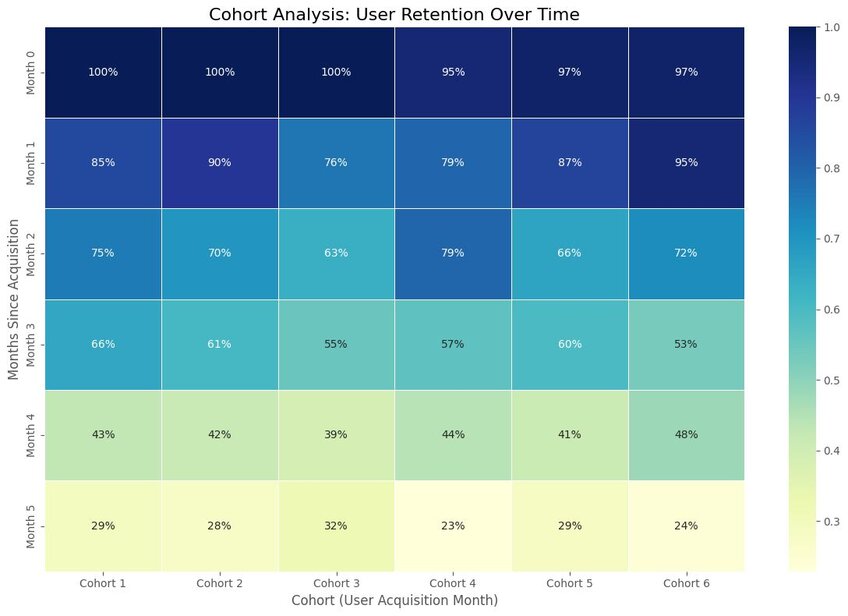
Many businesses perform cohort analysis to identify trends and draw valuable insights from their data. However, given the complexity of cohort analysis, it’s not the kind of task you’ll want to carry out manually. Instead, you’ll need helpful analysis tools to assist you, saving time, effort, and resources.
There are numerous options available. This guide looks at 10 of the best cohort analysis tools.
Key Takeaways
• Cohort analysis helps businesses track customer behavior over time, improving retention, marketing, and data-driven decision-making.
• The best cohort analysis tools, like Julius AI, Google Analytics 4, and Mixpanel, automate insights, making analysis faster and more accessible.
• Choosing the right tool depends on your business needs, budget, and scalability—AI-powered solutions offer advanced automation and deeper analytics.
Understanding Cohort Analysis (And Its Importance)
For those who aren’t yet familiar with this form of data analysis, cohort analysis involves breaking data down into groups, otherwise known as cohorts. Each cohort is created according to shared characteristics. For example, you might have one cohort of users who all signed up to your platform around the same time, or a cohort of customers from one location.
Through this method of user segmentation, companies are often able to glean more valuable and actionable insights about their users. They can identify patterns of user behavior, for example, and learn why certain user cohorts tend to act or react in certain ways. It’s a great technique for maximizing user engagement and minimizing churn.
As an example, an e-commerce store might conduct cohort analysis and find that a group of users who signed up after the store’s latest update has made far fewer purchases than those signed up before the update. Further analysis may reveal that a specific part of the update – like a new plug-in or a layout change – is to blame, and the store owner can make necessary adjustments to restore user engagement.
Indeed, e-commerce is one of the main areas where such data analysis techniques often prove useful. It’s also great for retail, manufacturing, hospitality, and even other industries like medicine, finance, and healthcare. Whenever companies can benefit from learning more about subsets of their audience, cohort analysis (and the best cohort analysis tools) are of great use.
Why Your Business Needs Cohort Analysis Tools
The first and most obvious reason to invest in cohort analysis tools is simply to open up the opportunity for this form of analysis. It’s very difficult to conduct reliable and effective analysis without these sorts of tools. With their help, you can learn much more from the raw data at your disposal, particularly customer and sales data.
Here are some more benefits of investing in data analysis solutions:
• Ease the Burden on Staff: Even with highly skilled data analytics experts on your team, for them to conduct cohort analysis accurately demands a lot of time and focus. Investing in tools eases the load on your workers, making it easier for them to extract insights to drive data-driven decisions.
• Make Analysis More Accessible: Businesses without cohort retention analysis experts on their teams may feel that such analytical procedures are simply beyond them. However, with the right tools, even total beginners can dig into behavioral cohorts.
• Provide the Most Accurate, Valuable Insights: This type of analysis can produce very valuable, actionable insights about customer behavior and user interactions. But you’ll only get those kinds of high-level results if you utilize the best cohort analysis tools.
• Understanding User Behavior: By dividing your user base into cohorts, you can paint a clearer picture of who they are, how those users interact, and so on. It’s a valuable process in a lot of ways, and the best tools help you experience all the benefits.
• Improve User Retention Rates: Many companies use cohort analysis to reduce churn and maximize customer lifetime value. The best tools help you spot behavioral patterns and then develop smart, data-backed strategies to make users engage more consistently with your brand.
• Stronger Marketing Efforts: By learning more about your cohorts through analysis, you’ll also begin to learn how to market to them more effectively. You may find that certain channels or timings work better, for instance, which should make your marketing efforts more impactful.
• Increased Revenue and ROI: Ultimately, the end goal for this sort of analysis is more revenue and profit. The right tools used well, can help you boost customer satisfaction, sales, brand loyalty, and other key metrics, which all contribute to a significant amount of ROI.
10 Best Cohort Analysis Tools for 2025
Without any further ado, let’s have a look at some of the best cohort analysis tools you can use today. Some are free, others are premium. Some are quite basic and beginner-friendly, while others are more fully-featured and suitable for advanced users.
With so many options, you’re sure to find a tool that suits your needs.

#1 - Julius AI
Julius AI is an AI data analyst. Designed purely and exclusively for working with stats, figures, and other forms of data, it can do the work of entire teams of data analysts. It’s rapid, efficient, and easy to work with, and it doesn’t make the same mistakes and oversights human workers sometimes can.
A big feature of Julius AI is its workflows, which are basically like templates for analytical tasks. You can create your own, or use preset workflows. They allow you to conduct lots of different types of analysis, including cohort analysis, quickly, easily, and with seamless data integration.
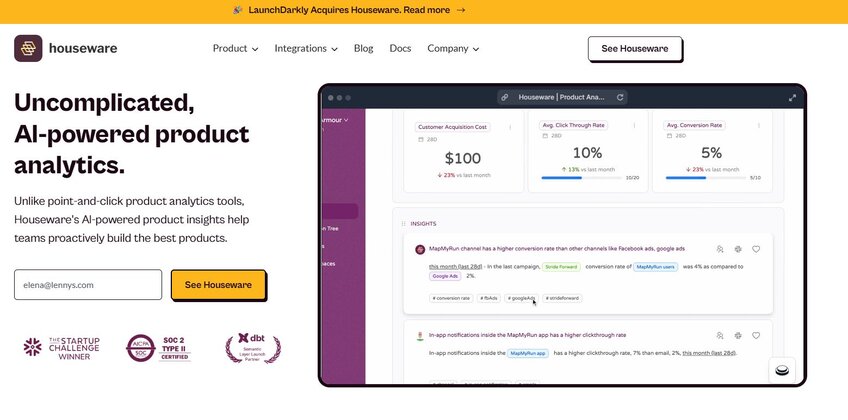
#2 - Houseware
Houseware is another analytical tool that harnesses the exciting new power of artificial intelligence. Like Julius AI, it is capable of numerous forms of analysis and offers cohort analysis by default as one of its many features.
Users can save themselves huge amounts of time, as Houseware automatically captures large amounts of data for you. It can then produce tables and other visualizations, and it helps you define and create cohorts without any hassle – just use the filters provided to sort your users by location, device, etc.
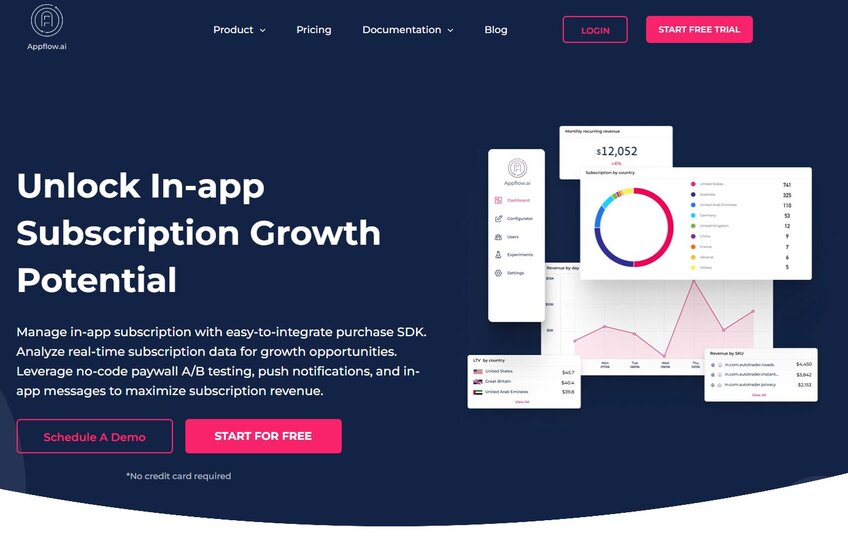
#3 - Appflow.ai
Appflow.ai is a real-time subscription revenue analytics platform. So, it has quite a niche audience, as it’s almost exclusively for subscription app owners and operators. However, if you fall into those categories, you can certainly extract a lot of value from this tool.
With this tool, users can easily segment their entire app user base into distinct cohorts according to various metrics and characteristics. You can divide them by time zone, language, acquisition channel, or various other factors. Then, use the built-in cohort analysis feature to dig into the data and spot trends.
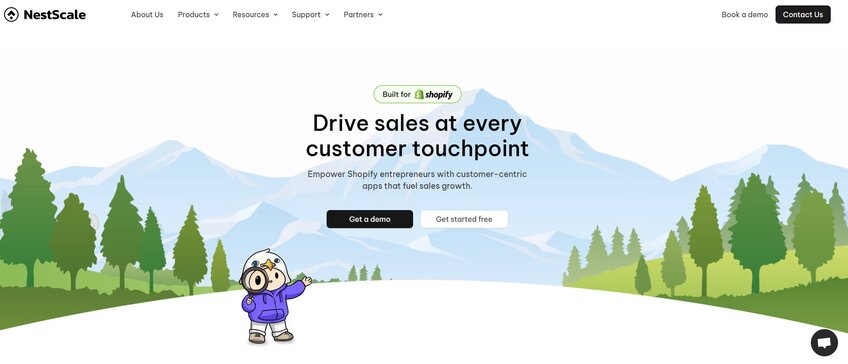
#4 - NestScale (NestAds)
NestAds by NestScale is another highly-rated cohort analysis tool and a good choice for brands that sell or market their products across a lot of different channels. This is because it does a great job of collating data from lots of different sources, like TikTok, Google, and so on.
NestAds can then help you divide that data into cohorts, and analyze each one individually while also learning more about your audience, both in parts and as a whole. It provides numerous helpful marketing insights and even recommendations about how to adjust your strategy to raise engagement.
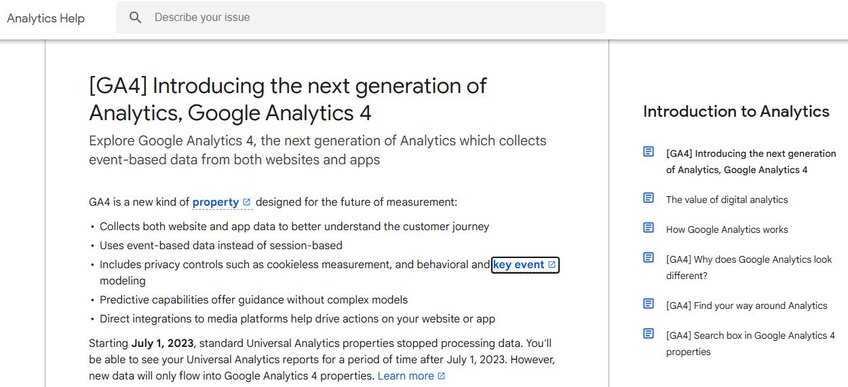
#5 - Google Analytics (GA4)
If you’re looking for a free cohort analysis tool, Google Analytics 4 isn’t a bad one to consider. A famous and popular tool for tracking stats, measuring metrics, and carrying out analysis, many users are not aware that Google Analytics is also capable of conducting cohort analysis.
It can be a little tricky to do this compared to the easier processes offered by other tools. However, intermediate and advanced users shouldn’t have too much trouble, and you can use Google Analytics to learn a lot about retention or churn trends among your users.
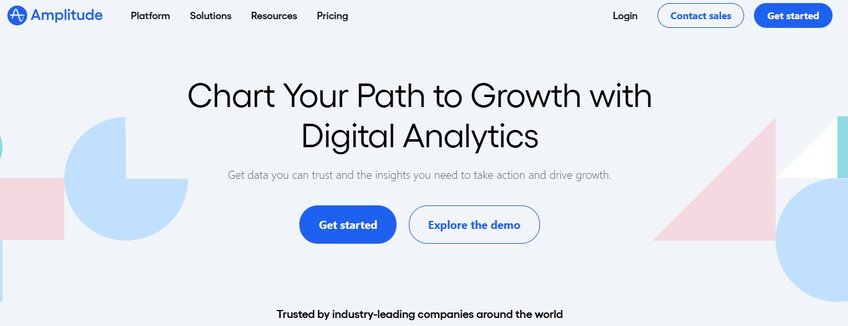
#6 - Amplitude
A product analytics platform, Amplitude is a very flexible choice for conducting analytical processes, including cohort analysis. It lets you choose from a wide range of user behaviors and other properties to define your cohorts, and then learn about them.
Scalability is a big selling point of Amplitude, as well as versatility. It even gives you the option to set your own custom cohort parameters, so you’re free to define groups exactly as you want, which is certainly helpful for brands operating in niche markets, with very specific objectives in mind.

#7 - Mixpanel
Another product analytics platform, Mixpanel is mainly aimed at app developers and operators. It helps you to learn more about how your app users interact with the app and one another, so you can take that information into account when updating and improving your app in the future.
There are lots of great features with Mixpanel. It offers funnel analysis, for example, detailed user segmentation, and cohort analysis as a built-in feature. This lets you easily identify trends among your users, and you can export the analysis reports and tables to dig into them even deeper with other tools.

#8 - OpenEpi
Cohort analysis isn’t just for brands, businesses, stores, and apps. It has great value for those operating in the medical and health sectors, too. For professionals in these fields, OpenEpi is one of the top tools to use. It’s free, open-source, and aimed at public health organizations.
You can run OpenEpi in your browser or offline, making it highly flexible, and you can adjust the source code to suit your needs. It allows you to conduct cohort analysis, breaking down users like patients, according to myriad metrics, and also supports numerous other analytical types.
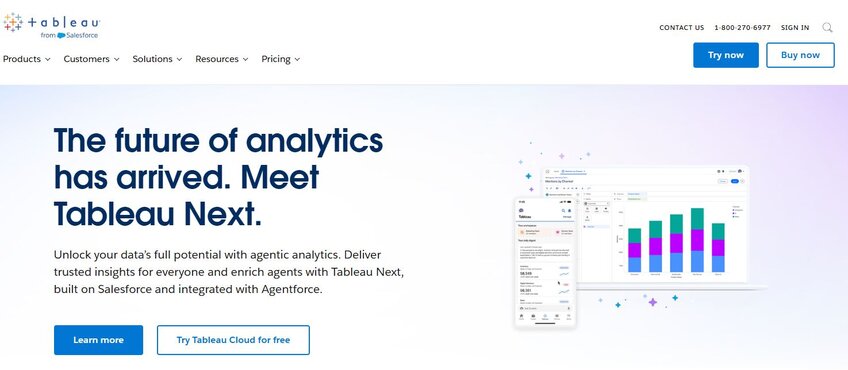
#9 - Tableau
Tableau is a data visualization app that has been a big name in the stats and data spheres for a long time. It is available in various forms, like Tableau Desktop, Tableau Mobile, Tableau Cloud, and Tableau Server, so can appeal to brands and teams of various sizes and those operating in different industries.
There is a large scope of analytical processes you can carry out through Tableau. It’s highly versatile and scalable. And, as touched on, its biggest selling point is its visualization creation – it helps you make tables, charts, graphs, and other visuals to easily spot trends or present findings to stakeholders.

#10 - GeneNetwork
GeneNetwork is another cohort analysis tool that is more aimed at the medical world. It appeals to public health bodies, medical students, and other professionals and teams operating in fields like biology, health, medicine, and epidemiology.
You can use this open-source cohort analysis tool to break down users according to their genetic background, and then look for trends. It may be used, for instance, to look for risk factors for certain diseases in parts of the population. It has enormous collections of genetic reference data to draw from, delivering highly accurate results.
How to Choose the Right Cohort Analysis Tool for Your Business
As you can see, there are plenty of cohort analysis tools out there. To pick the right one, you should:
• Define Your Business Needs: When you’re selecting any piece of your tech stack, it’s important to match the apps and tools you choose to your end goals. Think about what you want to achieve through cohort analysis, then choose a tool that will help you do that.
• Consider Core Features: As the list above has shown, even the best cohort analysis tools can vary quite a lot in features and functionality. Think about the main features your business will get value from, and ensure your chosen tool can do all you need it to.
• Calculate Your Budget: Price tags also vary quite a lot between analytical tools. So, before you sign up for a subscription analytics platform or spend any cash on a premium cohort analysis solution, work out how much you’re willing to spend.
• Look to the Future: Your company may grow and change a lot in the future, and your customer base might also expand and diversify. Make sure you’ve got a tool that can scale up and adjust accordingly so that it will continue being useful for your organization tomorrow, not just today.
Want to Make Cohort Analysis Quick and Successful? Let Julius AI Help
Of all the best cohort analysis tools discussed above, Julius AI stands out from the crowd. Powered by cutting-edge AI, it’s one of the most flexible, straightforward, and effective data tools, ready to aid with cohort analysis and numerous other analytical processes.
Test it out today, and witness the benefits for yourself.
Frequently Asked Questions (FAQs)
How do you analyze cohort results?
To analyze cohort results, you start by segmenting users based on shared characteristics, such as sign-up date or purchase behavior. Then, track key metrics like retention, engagement, or revenue over time to identify trends and patterns. By comparing different cohorts, you can uncover insights that help optimize user experience, marketing strategies, and business performance.
Why is cohort analysis important for business?
Cohort analysis allows businesses to go beyond surface-level data and understand how different customer segments behave over time. It helps identify trends in retention, engagement, and churn, enabling data-driven decisions that improve customer satisfaction and boost revenue. With these insights, businesses can refine marketing efforts, enhance product offerings, and develop strategies that drive long-term growth.
What type of businesses benefit from cohort analysis?
Any data-driven business can benefit, but it’s especially useful for e-commerce, SaaS, finance, healthcare, and retail. These industries use cohort insights to improve retention, personalize marketing, and enhance product development, leading to smarter decision-making.
What are some free cohort analysis tools?
Google Analytics 4 is a popular free tool for tracking user retention, while OpenEpi serves public health research, and Tableau Public offers data visualization. For more advanced insights, Julius AI provides AI-driven cohort analysis with automation and customization features.
Can you use a cohort analysis tool without data science expertise?
Yes, many modern cohort analysis tools are designed to be user-friendly, offering intuitive dashboards, pre-built templates, and AI-powered insights. Tools like Julius AI, Houseware, and Mixpanel make it easy for non-technical users to segment data, visualize trends, and generate actionable insights—no coding or data science expertise required.
